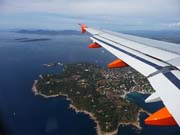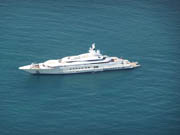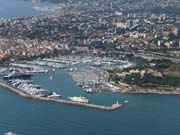|
I chose some pretty faint targets for this visit,
expecting the clear dark skies of Les Granges to help with
the imaging. But some of them were even more difficult than
I anticipated, and this and LBN777 below probably need a
full week each! This faint nebula is LBN442 in Lacerta. My
SBIG ST-10XME on Olly's Takahashi FSQ85. Luminance 17 x 10
minutes H-alpha, Colour Ha with 3 each x 10 minutes O3 and
S2. The night of 21st. September.
Full
size
|
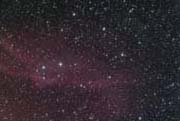
|
|
I chose the brighter NGC7822 in
Cepheus for its interesting dark lanes and intrusions.
Optics as above, Luminance 17 x 10 minutes H-alpha, Colour
Ha with 11 x 10 minutes each O3 and S2. Captured over two
nights 22nd and 23rd.
Full
size
|
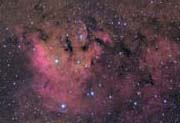
|
|
A bit of Solar viewing on 23rd September. I had a QHY5
monochrome camera with me. This is essentially a guide
camera, but the good sized chip nicely encompasses the Sun
on my Solarview 50. A group of small sunspots and an
interesting bright area as well as several small
prominences.
|

|
|
LBN777 in Taurus is also known as
the Vulture's Head nebula. A late target for September, so
again imaged over two nights, the early hours of 23rd and
24th. Luminance 17 x 10 minutes, RGB each 6 x 5 minutes
binned 2x2 due to shortage of time. A very faint low
contrast target which really deserves a lot more data.
Optics as for LBN442 and NGC7822. The dark 'head' area is
also classified as Barnard 207.
Full
size
|
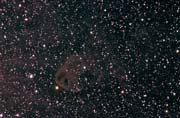
|
|
On 24th, we fitted Olly's 10" Meade SCT to the mount, and
early in the evening imaged Jupiter. The moon shadow is that
of Ganymede. Toucam with 3x Televue Barlow, stack of 1100
frames.
|
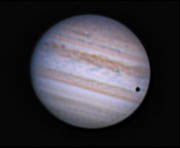
|
|
Following Jupiter, I fitted a 0.63
reducer to the SCT and attempted to image the large (5
arc-minutes) but faint (mag 12.7) planetary nebula, Jones 1
in Pegasus. But unfortunately the sky misted over and cut
short the imaging run. So this monochrome image consists of
6 x 10 minute subs, binned 2x2 with the ST10.
|
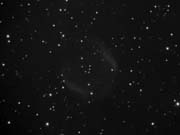
|
|
That completed the imaging. Although Friday night started
out promising, and I began imaging the Helix nebula using
Olly's Meade 127 refractor, the sky soon developed patchy
mist, and insufficient data was collected. Likewise the
Saturday night never cleared sufficiently after the
thunderstorms.
|
|
|
I took my Solarview50 Hydrogen alpha telescope with me.
Mounted on Olly's Televue Gibraltar mount it gave us some
excellent views of the Sun. The binocular eyepiece, although
making viewng less comfortable gives a superb rendition.
It's not possible with the binocular to use a star diagonal
- insufficient back focus.
|
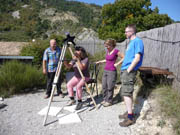
|
|
With a hi-tech Sun screen viewing became even better!
|
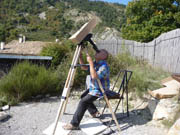
|
|
Although it was September, eating outside was still very
pleasant. L to R, Olly's partner Monique, her daughter
Gentian, Tom O'Donoghue who was guesting at the same time,
and Olly.
|
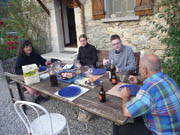
|
|
I'm in this one!
|
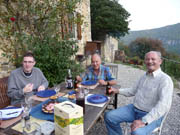
|
|
While we all-night observers were sleeping through the
mornings, Monique and Gentian picked mushrooms in the hills
behind the house. Delicious!
|
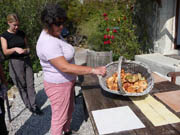
|
|
On my last day (Saturday) there were thunderstorms
floating around with a fair bit of rain. and this Salamander
appeared in the late evening (taken with the camera flash).
|
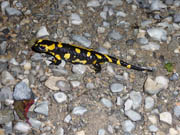
|
|
The following morning the mist which curtailed our
imaging still formed a temperature inverted carpet in the
valley. Fortunately it soon cleared during my return journey
to Nice.
|
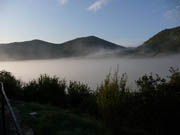
|
